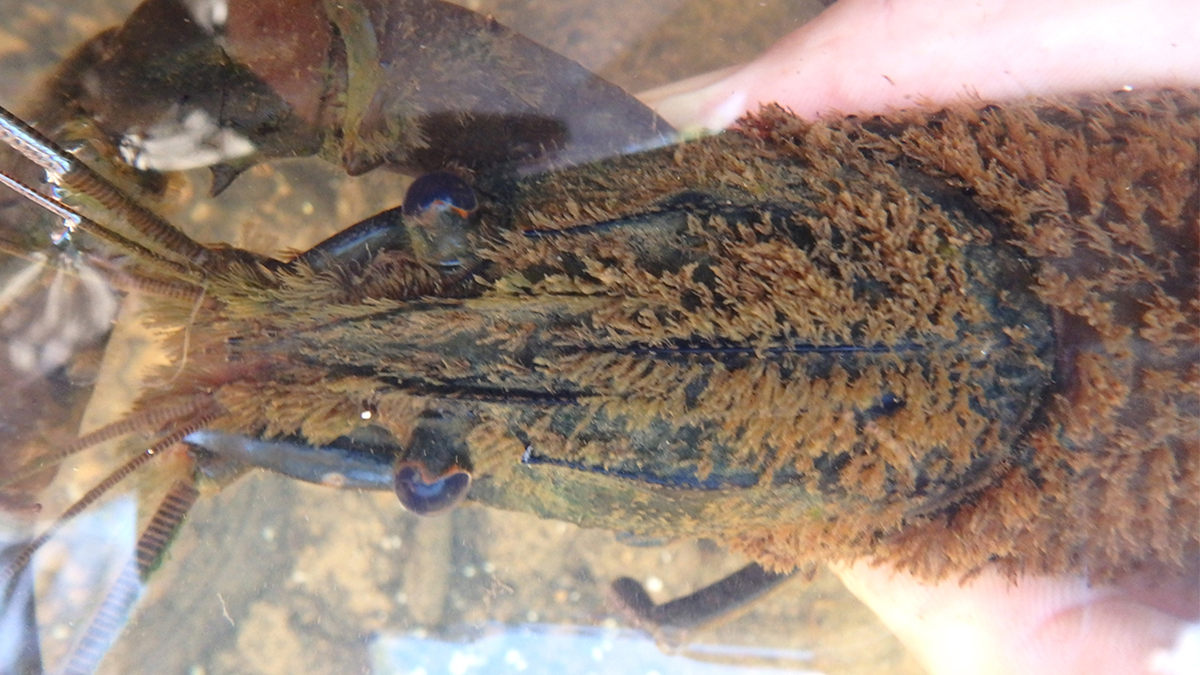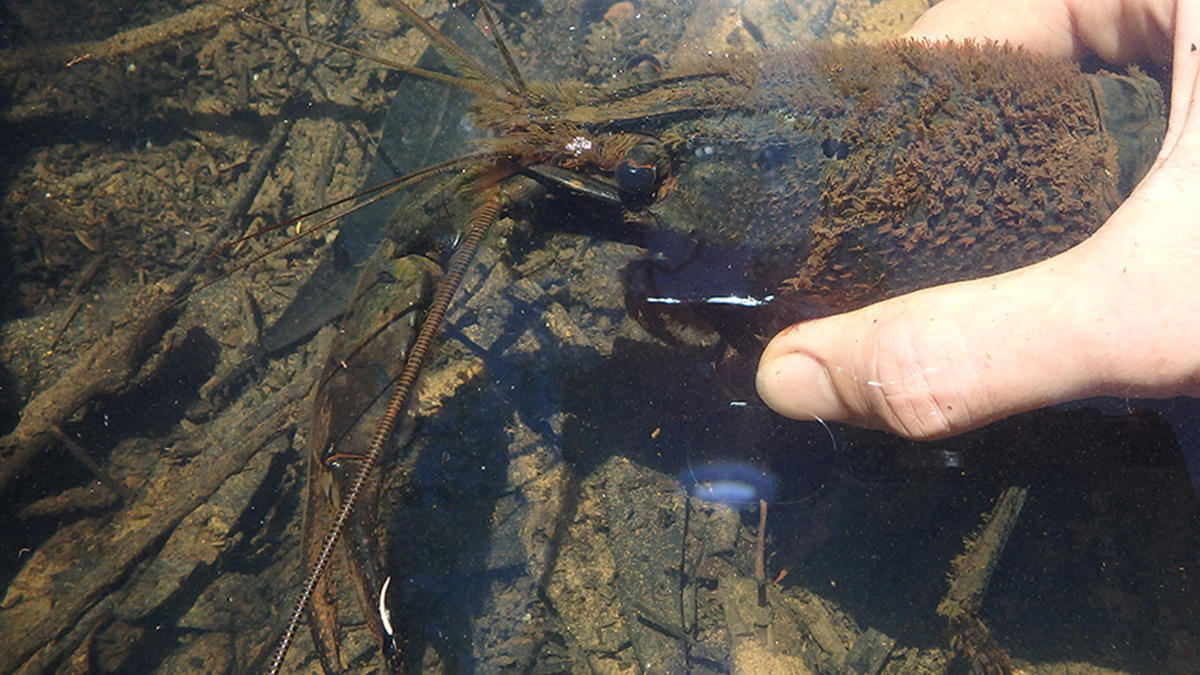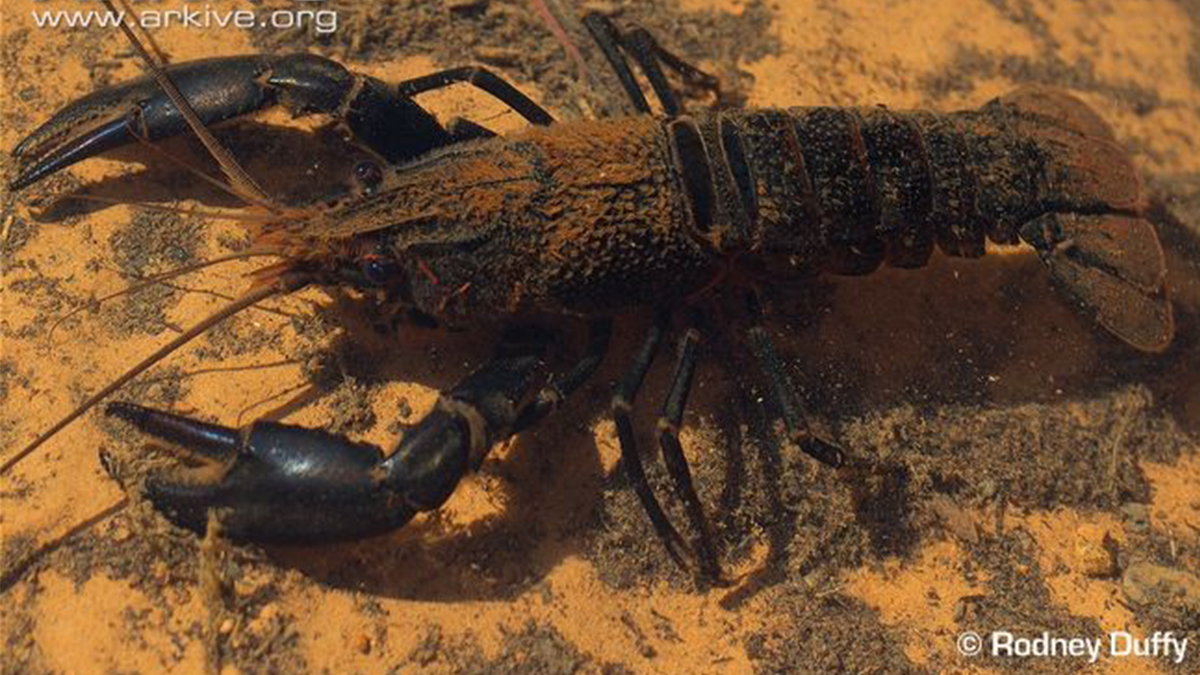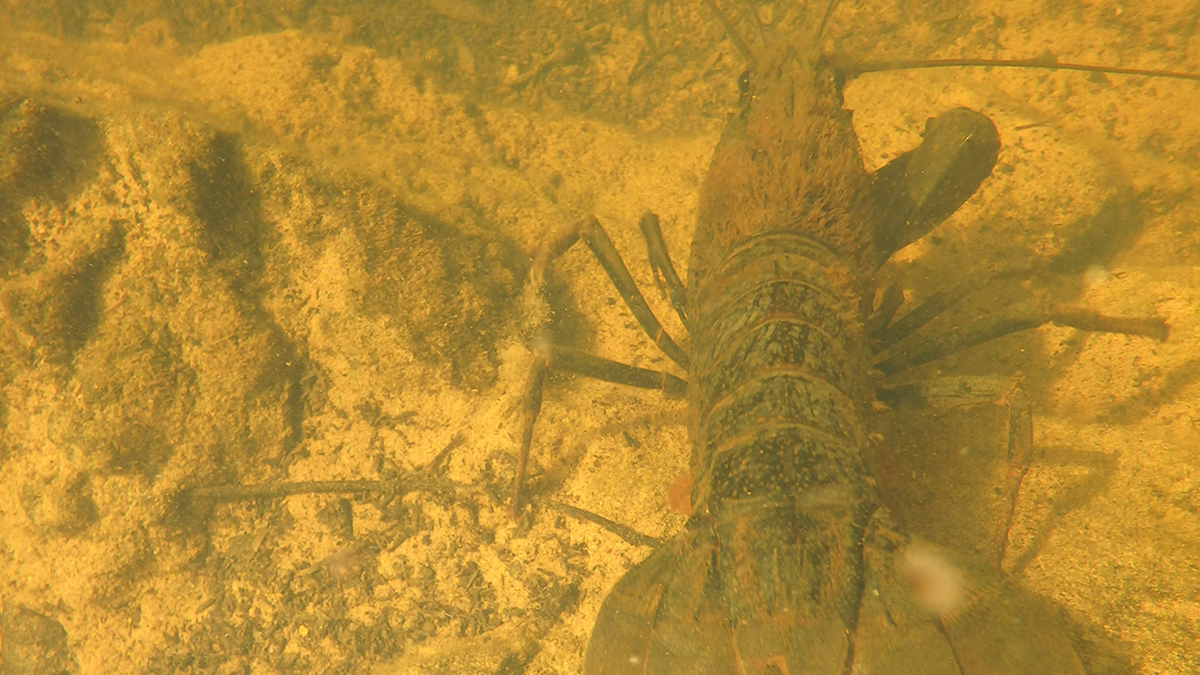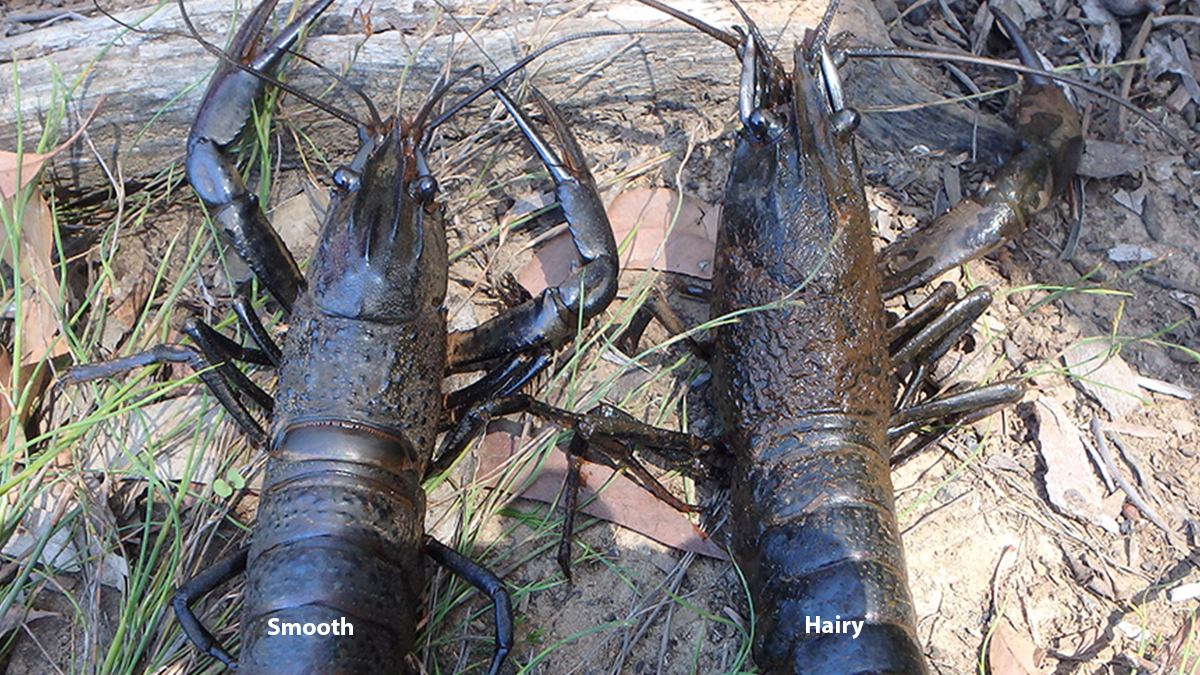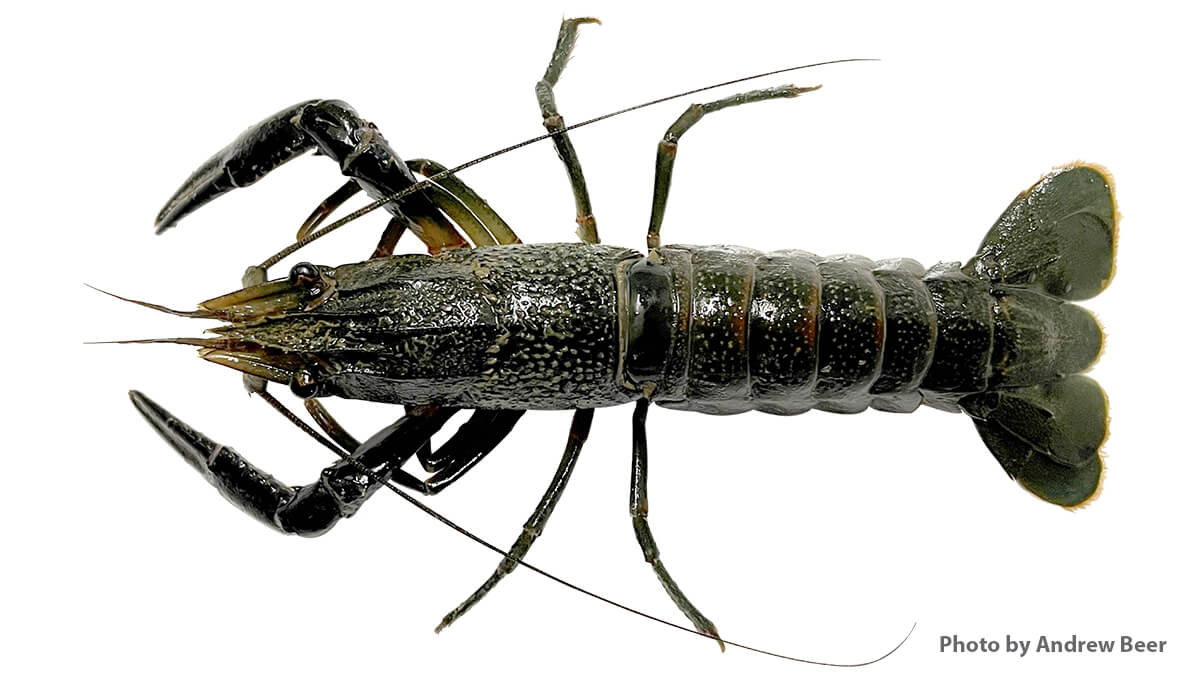Hairy marron - Cherax tenuimanus
Identification
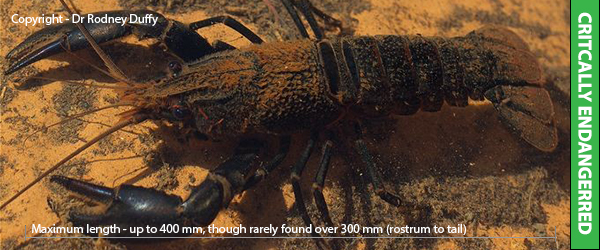
This is the most threatened freshwater animal in the southwest, with only a small number of mature animals left in the wild from only a few locations in a small section of the Margaret River.
Colour is back to dark brown. Maximum size is expected to be similar to smooth marron.
It is similar in appearance to the smooth marron, distinguished by a central keel that extends to the cervical groove (the central keen on smooth marron ends before the groove) and the presence of distinctive cover of setae or hairs (particularly obvious over the cephalothorax). The hairs may not be obvious on juveniles and they are therefore very difficult to differentiate (when smaller than around 30 mm Orbital Carapace Length).
The most significant threat to the species is hydribisation with smooth marron, which also impacts the ability to visually identify pure strain species (as hybrid animals will take on the features of the parents, to varying degrees).
Distribution
Restricted to the Margaret River in south-west Western Australia. Distribution with this river has, and continues to be, reduced due to competition and hydridisation with the smooth marron, which were translocated to the system. The hairy marron is currently only left in 3 main river pools in the upper reach, living alongside the introduced smooth marron.
Habitat
Prefers fresh, highly oxygenated, clear-water habitats of the Margaret River, with complex shelter including large woody debris which it also utilities as a food source. It is omnivorous, feeding on both plant and animal matter.
The environmental tolerances of the species are largely unknown (due to low number of animals available to study), however it is expected to have similar (if not more sensitive) requirements to smooth marron, i.e. intolerant of high salinity and temperature, and susceptible to low dissolved oxygen.
Biology
Similar reproductive biology to smooth marron, mating in late winter through spring (July-October) with eggs and then hatches juveniles held under the tail (bound to swimmerets to facilitate oxygenation and allow for cleaning) until around November-December.
However, the breeding period, and consequently timing for release of juveniles, is reported to be later than the smooth marron – which is one reason the smooth marron is outcompeting the hairy marron.
Conservation status
Threatened species: Listed as critically endangered under the Biodiversity Conservation Act 2016 (state, Western Australia), the Environment Protection and Biodiversity Conservation Act 1999 (Commonwealth) and the ICUN Redlist of Threatened Species 2020 (International).
Under the BC Act, Threatened species are listed in the category of critically endangered, endangered or vulnerable. Critically endangered species are considered to be “facing a very high risk of extinction in the wild in the immediate future, as determined in accordance with criteria set out in the ministerial guidelines”.
Management
Captive breeding programs of the species have been undertaken but have proved challenging. Ongoing efforts are being undertaken to prevent the extinction of the species that include strategic fish-outs of the smooth marron from the upper Margaret River. The upper Margaret River is closed to recreational smooth marron fishing due to the high risk of accidental (or deliberate) removal of remaining hairy marron.
Further information
Roxanne Taylor Media
Published on 16 Mar 2016
Margaret River is best known for its wineries, but the river itself is also home to a critically endangered crayfish, not found anywhere else in the world. Scientists are working to ensure the hairy marron lives on and their survival is not impacted by other uses of the river water. Aired on ABC News WA on Sunday 6th March 2016.
Filming, editing and reporting by Video Journalist Roxanne Taylor
Interviewees: Dr Tim Storer – River Science Manager, Department of Water
Dr Beau Wykes – Chair, Cape to Cape Catchments Group
Adam Maskew – Regional Manager, Department of Water
Gill White – Senior Scientist, Department of Water
Contact the department’s River Science team
